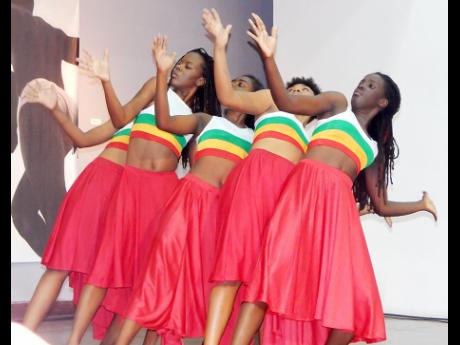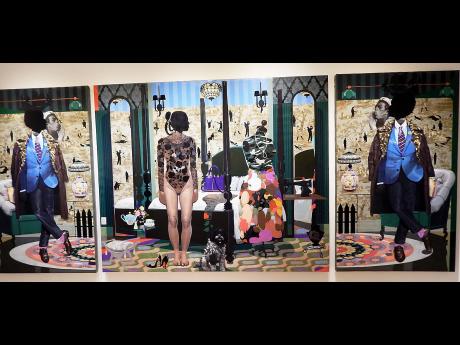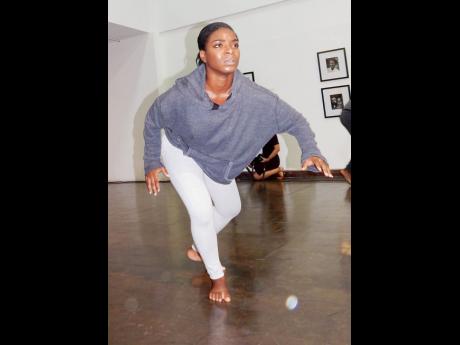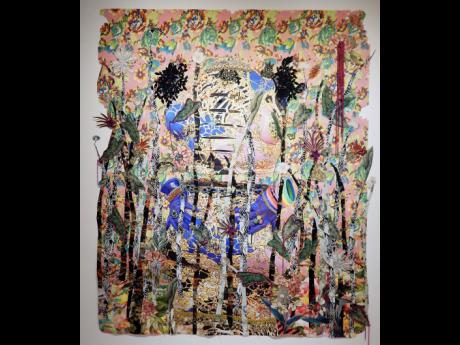For the Reckord | The National Gallery and Quilt exploring new spaces
When it comes to the work of the National Gallery of Jamaica and Quilt Performing Arts, the use of space is crucial. Both entities are currently exploring the use of non-traditional spaces.
This was explained to me by Quilt's founder and artistic director, Rayon McLean, and senior curator at the National Gallery Oneil Lawrence at the recent opening of the Gallery's current exhibition - Beyond Fashion. A performance by Quilt was part of the gallery's 'Last Sundays (of the month)' function.
"The National Gallery is partnering with Kingston Creative - a group trying to develop a creative hub and an art district in downtown Kingston," Lawrence explained. "They want to link all the creative spaces downtown and even create new ones. So far, they've had an art walk, art-and-craft fairs, and an architectural walk."
Lawrence said he has been working with Kingston Creative founder Andrea Dempster Chung, who describes her passion online as "empowering creative entrepreneurs by enabling them to build sustainable, profitable businesses". The gallery's partnership with the group would involve the display of the gallery's art outside of its walls and increased interaction with performing groups.
A major objective of the Beyond Fashion exhibition, which closes on January 15, 2019, is to show that there should be no boundaries to art. "The barriers between artists and artisans are political and artificial," Lawrence declared. "All types of art transform things from one form to another. Where do you draw the line between decorative art, fine art, and craft? All require skills, intelligence, talent and dedication."
The exhibition displays the work of 13 artists and artisans. Though initially planning an exhibition about people who have been engaged in the fashion industry, the curators realised that in many cases, the work crossed boundaries.
"There are fashion designers who sculpt, paint, and are also jewellers," Lawrence said. "Additionally, all have been making statements beyond creating a precious object - personal and political statements."
He said the exhibition asks viewers to consider the emotional, didactic, empathetic, and spiritual potential of the pieces. "Each one of these works has many layers and tells many stories," he explained.
The exhibition is mounted in six galleries under various themes (for example, The Politics of Fashion, the Effects of Colonisation, and 'Black Lives Matter') and statements about personal vulnerability. That means the artists don't have discrete exhibition spaces as their themes and messages often overlap.
Quilt's Performance
Quilt was performing at the gallery for the fourth time, with McLean saying, "We've built up quite a following." He was referring to the standing-room-only audience that was in attendance at their last performance. The three pieces performed were 'Transmission', 'Run' and 'Bongo Man', each about 12 minutes long.
McLean recently returned to Jamaica (and Quilt) after spending a year at Goldsmith's College on a Chevening Scholarship, pursuing a master's degree in applied theatre. There he said he "learnt a lot" from the "wonderful experience" that guided the improvised creation of 'Transmission' as his way of re-entering the company. He explained that the piece is about how we communicate with the world around us.
In one of his frequent references to "space", he said that his Goldsmith College experience made him want to do more research and writing about this Caribbean space. "It's a deficit with the artists in this region. We see a lot of people not from this space writing about our space. I want to write more about this space I'm in," he said.
He continued, "I'm trying to re-socialise the group about how we use space." He says that the group meets weekly, whether they are preparing for a show or not. "We don't have a building, but we can use the grass. We do want a building, but space is social, and we have that social space, and we can go anywhere with it."
Quilt's unconventional approach to space was evident in the gallery's production. The performances took place almost as much outside the auditorium where the audience was seated as in it. There was singing on the stairs, speech from the balcony overlooking the auditorium, and - especially in 'Run', about the frenetic pace of modern life - frequent dashing in and out of the auditorium.




